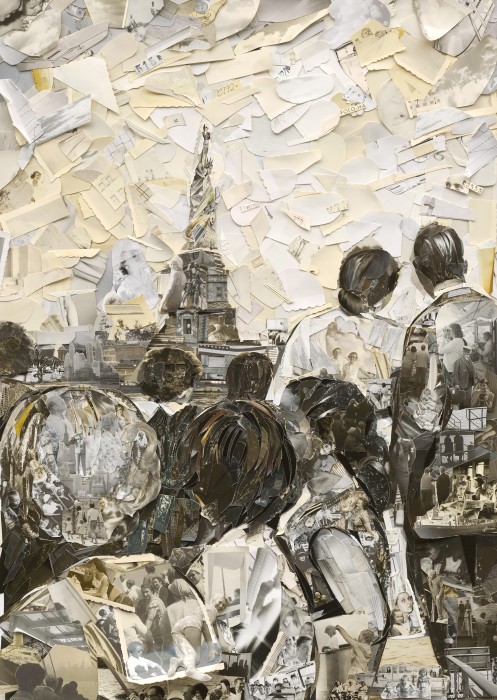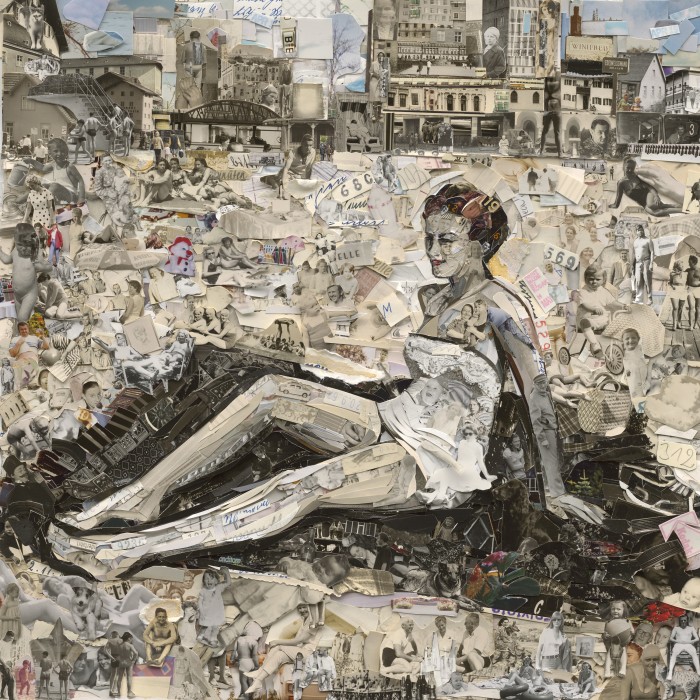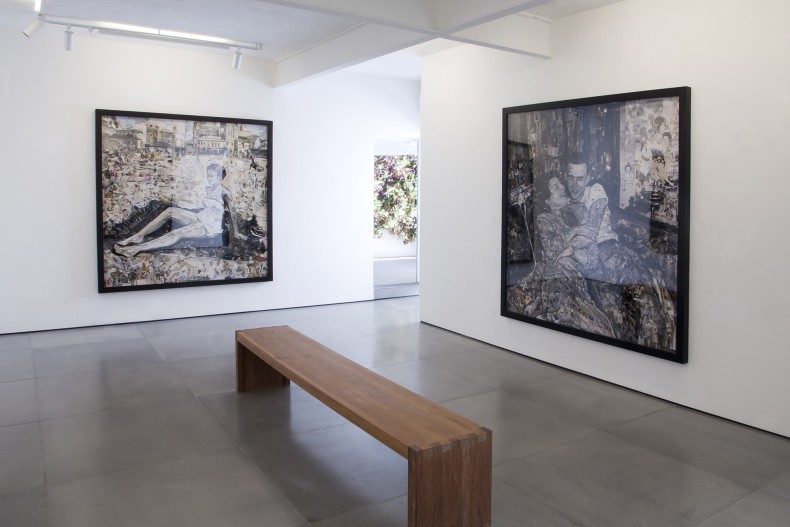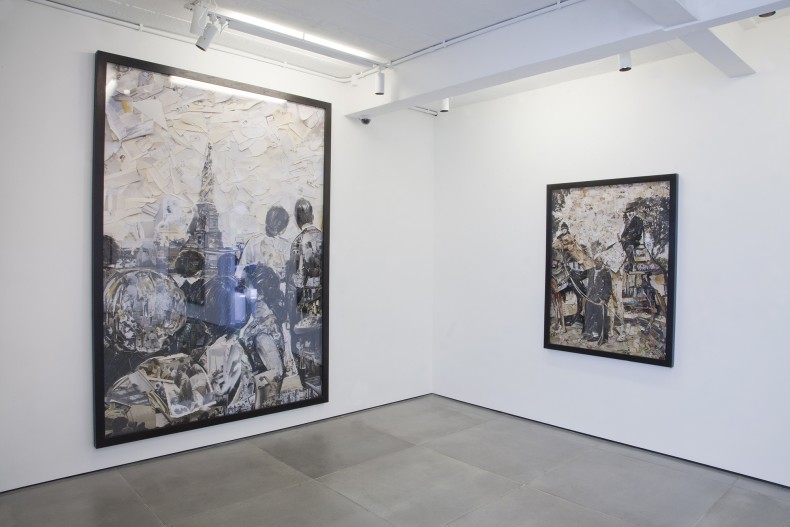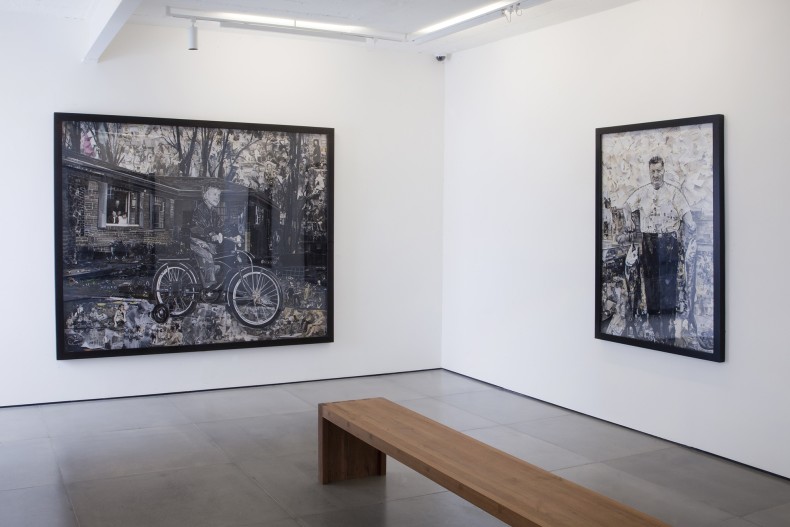The second exhibition to be hosted by Galeria Nara Roesler in Rio de Janeiro is Vik Muniz’s. The artist, who works between New York and Rio de Janeiro, will present 11 pieces never seen in Brazil before, from two recent series, Album and Postcards from Nowhere. In these series, he respectively works with fragments from photographs and postcards in order to evidence and subvert the mechanisms through which images are perceived, when they are decomposed into its various layers of comprehension: detail, the totality, and the imagination of those who see them.
Comprising B&W and sepia-toned photographs taken from family pictures, the images in Album are huge reproductions of personal scenes immortalized by the camera. Up until shortly after the mid-20th century, taking a photograph was nearly a solemn action reserved to special occasion, given the price and specificity of the materials employed. Thus, only truly memorable events were worthy of being captured.
With the cheapening of equipment and the advent of digital technology with its infinite, instantaneous reproducibility, photography became commonplace, stripped of its dimension of solemnity and intimacy. This is what Muniz problematizes in Album, through the myriad images that comprise the macro-photograph.
The viewer’s gaze is divided between focusing on the bigger picture, which in this case can be the girl with the baton in a marching band, the elderly man proud of the fish he has caught or the young woman posing on the beach, and focusing on the small mementos that seem to get lost in the collectiveness and the impersonality. As a result, the audience finds itself confronting issues such as personal experience as opposed to collective experience, the formation of memory, and the trivialization of image stemming from the saturation caused by its incessant production.
In Postcards from Nowhere, Muniz employs postcard fragments to recreate iconic landscapes. The very technique used in photographing these “collages” adds volume to the cutouts, and the lighting renders perceptible the superimpositions of their small parts. This creates the illusion that the giant photograph is also a cutout rather than a reproduction. Yet another layer to toy with the idea of representation.
As they alternately draw nearer and farther in order to capture both the bigger picture and its pieces, viewers resort not only to what they see, but also to their imagination regarding the famous sites depicted. As the British critic Christopher Turner has said about Vik Muniz’s work, “the multiplicity of imagery used to compose his collages adds a mediating, third layer that further ensnares the viewer and makes reference to all the cultural and visual baggage they bring to their encounter with art. The separate pieces that compose the puzzle are, in themselves, images that attract attention and decelerate the eye’s movement, frustrating any attempt at a seamless reading.”
These different layers drive viewers to perceive the mechanisms that vitiate their sight or cause them convert the images into recognizable and therefore superficially assimilated elements. To intently see a piece by Vik Muniz is to engage in a critique of one’s own gaze, in the quest for de-automatized observation of the world around us.



